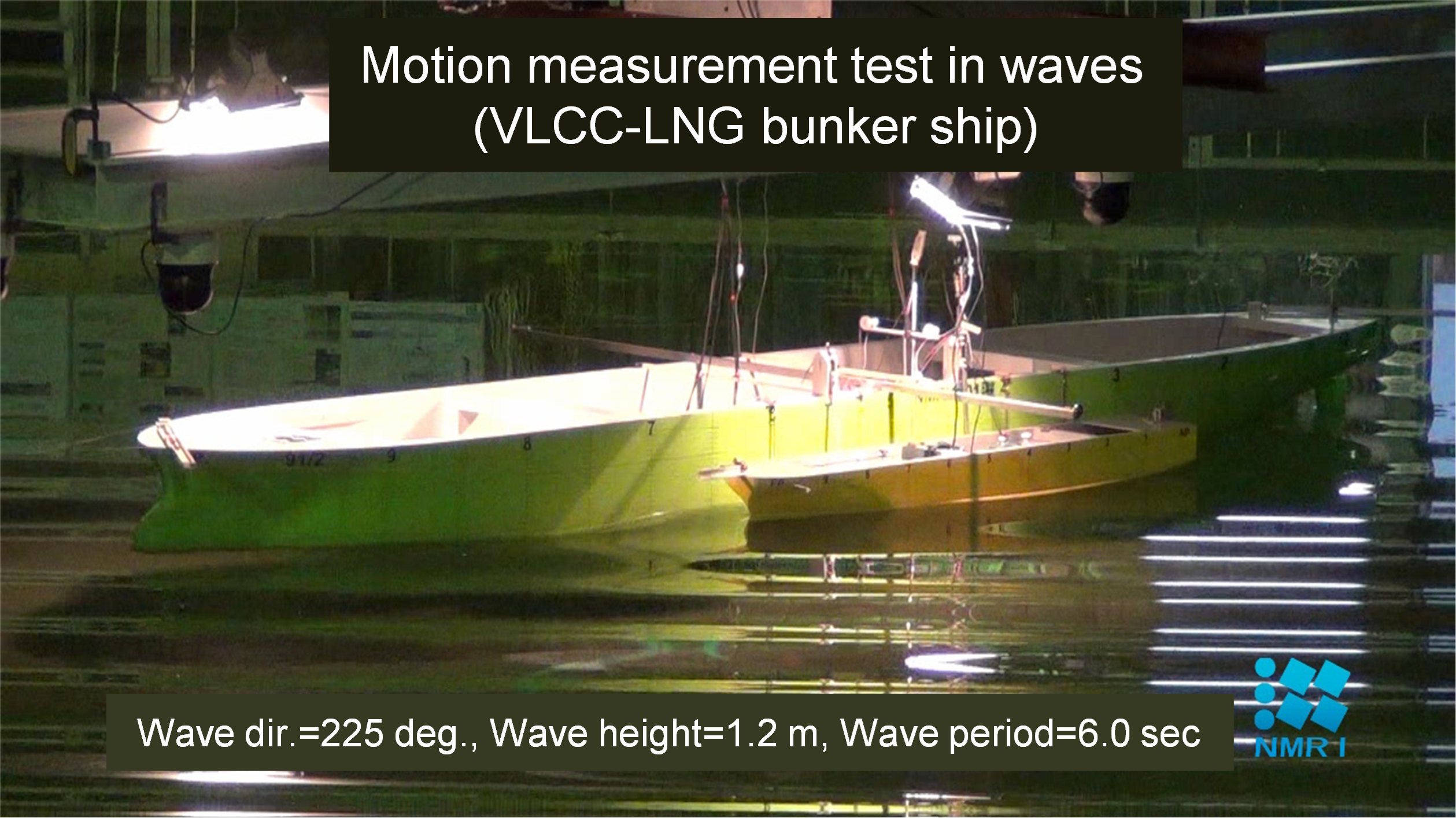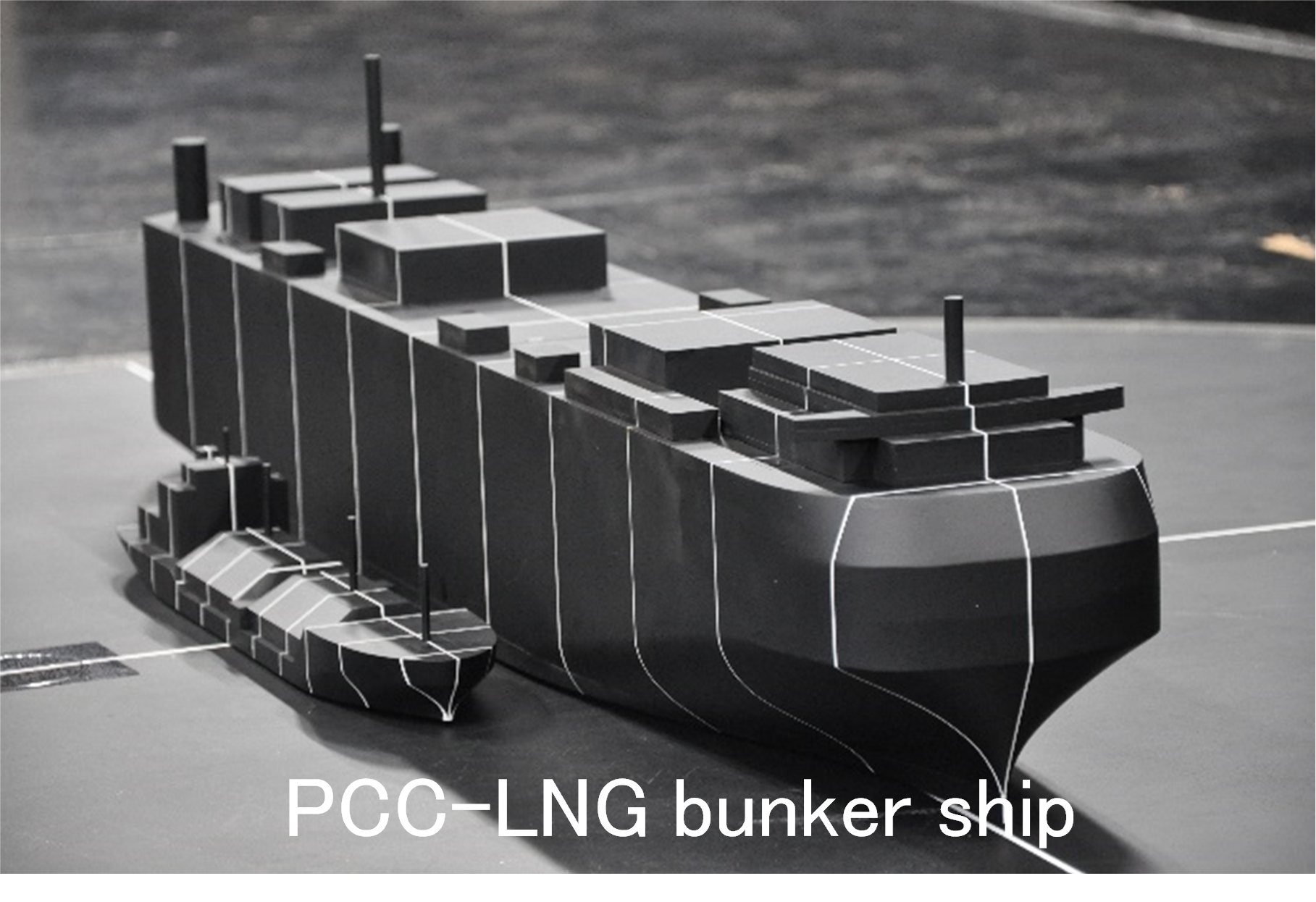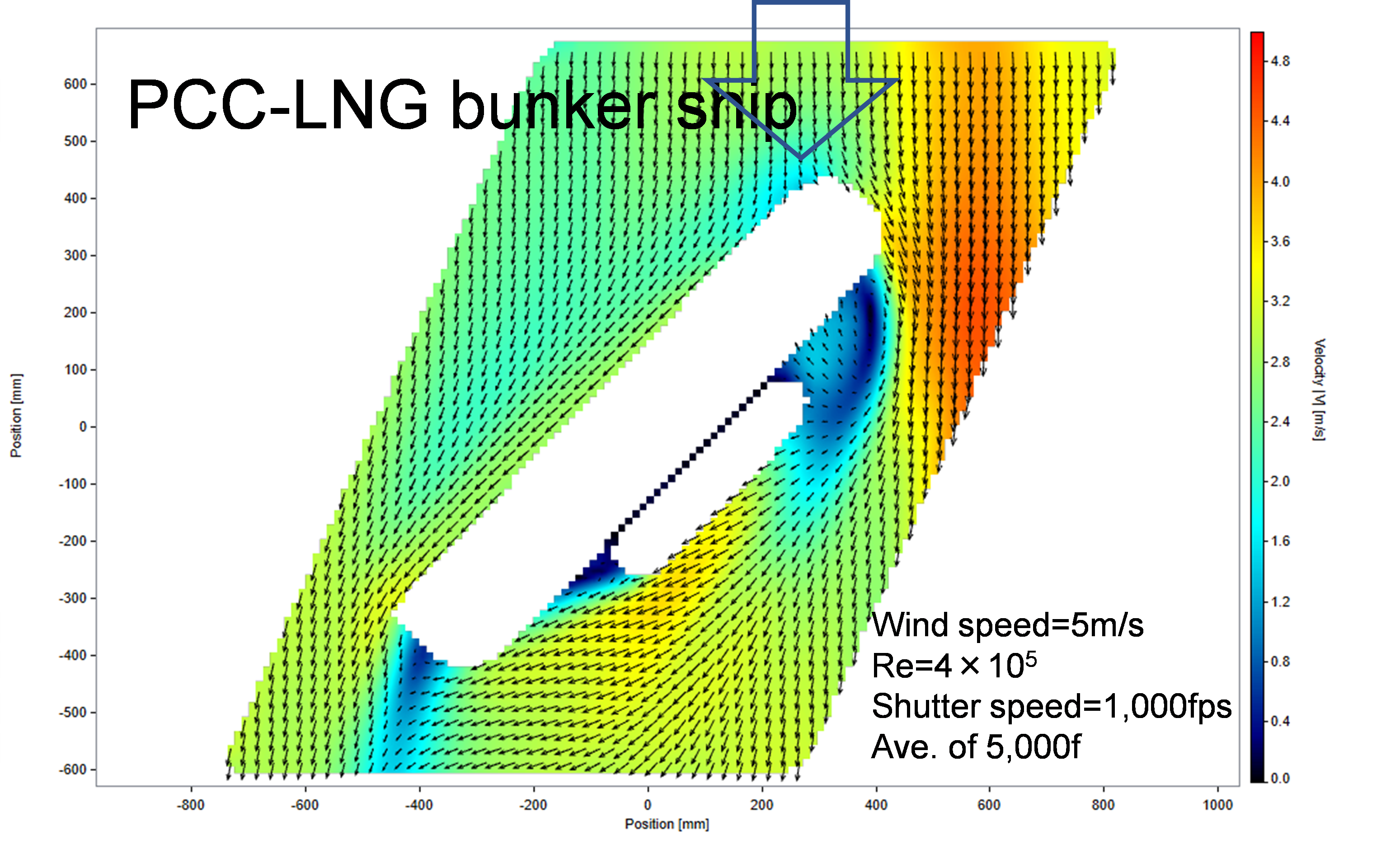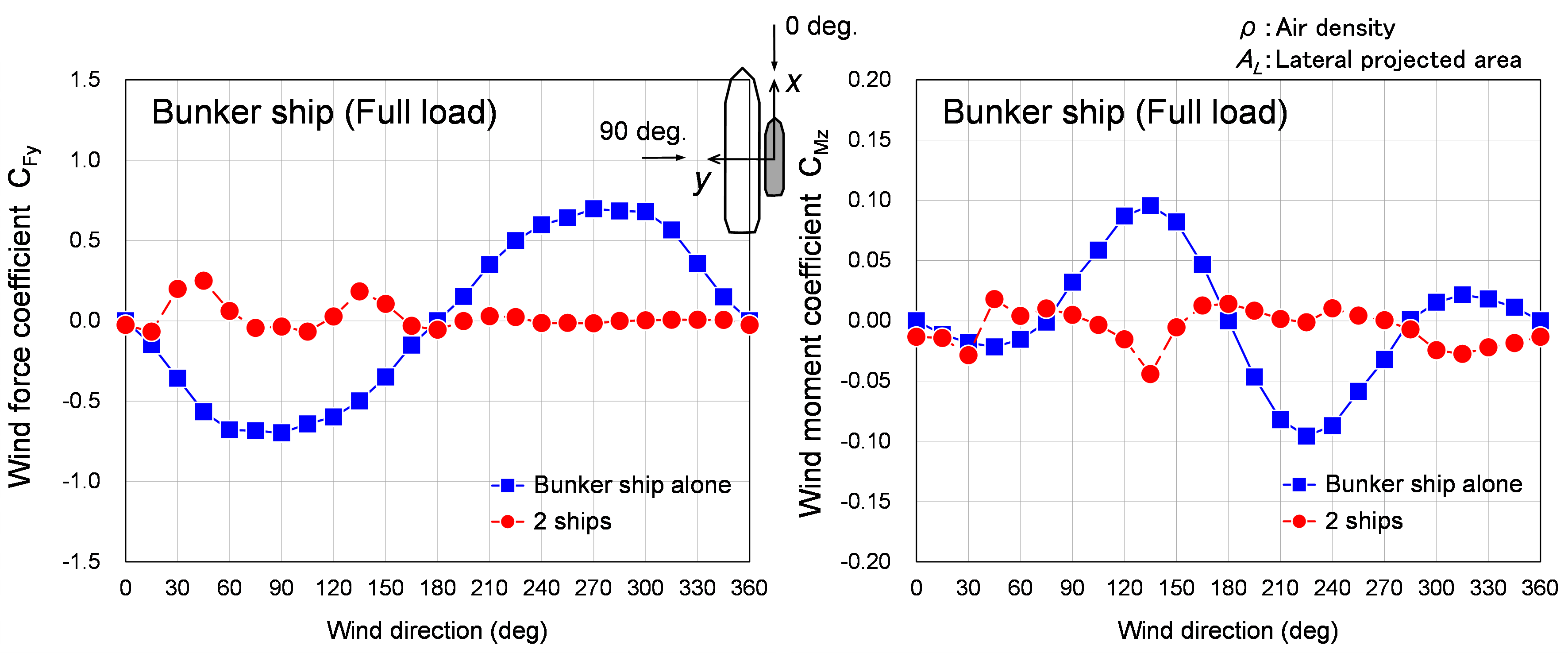Study on safety and operability assessment in LNG bunkering operation by Ship–to–Ship transfer method
Research Overview
Research Overview
As environmental regulations by the International Maritime Organization (IMO) advance, the benefits of LNG fuel and LNG-powered ships are gaining public attention due to their ability to reduce SOX and CO2 emissions. In Japan, the first bunkering of an LNG-fueled Pure Car Carrier (PCC) using the Ship–to–Ship transfer method was conducted in October 2020. LNG, ammonia, and hydrogen are expected to become available as maritime fuels soon, and the Ship–to–Ship transfer method is likely to be adopted for bunkering these vessels, leading to increased demand for this method.
Accurately estimating the external environmental forces acting on both vessels is essential when using the Ship-to-Ship transfer method to evaluate bunkering operations' safety and operational limits. This is particularly important when considering the interference effects of the two ships nearby during bunkering. Additionally, it is well known that the motion characteristics of the two ships change significantly due to the effects of sloshing water in large fuel tanks and liquid cargo tanks, compared to scenarios where these effects are not considered.
Mooring lines and fenders connect the two ships involved in bunkering. The nonlinear characteristics of these connecting components and the effects mentioned above present a very complex problem. However, the Offshore Engineering System Research Group is addressing these challenges by researching technologies to estimate Ship–to–Ship bunkering operations' safety and operational efficiency accurately.
Model Experiments
Tank Test Movie : Motion measurement test in waves for two vessels in a side–by–side configuration
Tank Test Movie : Motion Measurement Test of Ship-to-Ship LNG Bunkering at Anchorage
Wind Tunnel Test Movie : Wind field observation test around two vessels in a side–by–side configuration
References
- Yukawa, K., Ishida, K., Sato, H., Fujiwara, T., Kato, S., Aoyama, N., and Hirata, Y.: On the Safety Evaluation of LNG Bunkering between Two Vessels, Journal of the Japan Society of Naval Architects and Ocean Engineers, Vol.19, pp.69-78, 2013 (in Japanese).
- Yukawa, K., Kato, S., and Sato, H.: On the Prediction of Wave Resonance Behavior in a Gap Between Vessels During Ship–to–Ship Transfer, Journal of the Japan Society of Naval Architects and Ocean Engineers, Vol.31, pp.93-106, 2020 (in Japanese).
- Yukawa, K., Saito, M., Manabe, H., and Iwakura, D.: Safety Evaluation of LNG Bunkering in Ship–to–Ship Configuration Using a Flexible Metal Hose, Journal of the Japan Society of Naval Architects and Ocean Engineers, Vol.31, pp.107-122, 2020 (in Japanese).
- Hasegawa, K., Okuda, R., Ishida, K., Ikemoto, Y., Saito, M., and Yukawa, K.: Experimental Study on Safety Assessment of LNG Bunkering at Anchorage under Combined Wave, Wind, and Current, Conference Proceedings The Japan Society of Naval Architects and Ocean Engineers, Volume 41, 2025.





